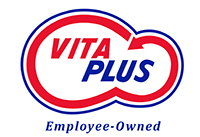
Recently, I heard a country song in which an old man provides counsel to “buy dirt.” While a song isn’t a source of financial advice, it does highlight the feeling that many producers have when nearby acreage comes for sale. The purchase of additional land for forage production can be a great opportunity. However, local competition and increasing land prices can make this difficult.
Maximizing the forage production from your available land base is pivotal because forage availability and quality can have immense impacts on your purchased feed and ration costs. Forage production efficiency can be best evaluated by determining if the gap between agronomic decisions and the nutritional needs of your dairy herd is bridged.
Owners and operators should rely on data from their farms to make informed decisions for their farms. Therefore, Vita Plus developed the Forage Efficiency Audit, a proprietary tool, to help determine homegrown forage production efficiency through a whole forage program analysis of agronomic practices, forage management and feed purchasing. The Forage Efficiency Audit calculates the value of nutrients harvested based on your local commodity markets, crop yields, and field nutrient data.
Each audit and its respective output are unique to your farm and built to assist in generating actionable data specific to your forage program’s challenges, questions, and goals.
Let’s explore one example. A farm needs an additional digestible fiber source for their dairy herd. It is proposed that double-cropping corn silage fields with triticale could be an effective solution. Farm managers use the Forage Efficiency Audit to better understand the effects of this decision on their nutrient yields and bottom line. After sharing pertinent information, determining a unique harvest sampling protocol, and concluding a successful harvest, a personalized output from the Forage Efficiency Audit was generated.
Overall, yields were increased by 2.7 dry matter (DM) tons per acre in double-cropped fields compared with single-cropped fields. As can be seen in Graph 1, double-cropped fields provided an increase in gross value per acre of $800. Some of this increased value was due to an additional 0.38 tons of crude protein harvested from the triticale.

Digestible NDF increased by 0.9 tons (shown in Graph 2) in double-cropped fields. The most economical digestible NDF source can now be quickly evaluated by comparing the cost per unit with purchase digestible NDF from off-farm sources and the cost per unit to produce digestible NDF on your farm. In this case, it makes sense for this farm to continue double-cropping triticale and corn to get an increase in digestible NDF and fiber. Note that all farms should evaluate their own unique situations as prices for commodities, byproducts, and the cost of producing forages varies.

Tools such as the Vita Plus Forage Efficiency Audit that assist bridging the gap between agronomic decisions and the nutritional needs of your dairy herd will improve forage production efficiency by lowering purchased feed and ration costs.


